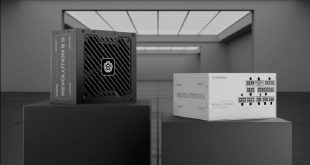The Double Conversion online UPS systems are the most common type of UPS above 10kVA and are ideal for applications where electrical isolation is necessary or for very electrically sensitive equipment. Such UPS systems a few years ago were reserved for business installations only and even though several companies made low power models available to home consumers during the past few years, the cost remains quite restrictive for the average technology enthusiast. It is an expensive type of UPS, mainly reserved for environments with very low utility power quality (industrial applications, data centers, systems running off several different and/or low quality power generators, e.t.c.).
The Double Conversion online UPS is not much different than a simple Standby UPS in terms of technology. The core design is very similar or even identical to that of a Standby UPS; however the rectifier no longer acts as a battery charger only but is designed to run continuously. This means that not only the rectifier is noticeably larger but the inverter is larger as well, since both are designed to work 24/7, and they also require improved cooling systems.
This type of UPS is called “Double Conversion” because the rectifier continuously powers the inverter, isolating the load from the utility power source even while the UPS is normally powered from it. Because of the design, a failure of the input AC load will not trigger a transfer switch since the batteries are always connected to the inverter. During a power loss the rectifier will cease to work and the batteries will keep the power feed to the inverter steady and unchanged, in no transfer time and without any switching transients. After the power is restored, the rectifier will get back to work and resume powering the inverted, as well as slowly charging the batteries at the same time.
Even though this design provides nearly ideal electrical performance and exceptional isolation (many people call Double Conversion UPS systems “electrical firewalls”, with a reason), it has several disadvantages as well. Because of the presence double conversion, where the power the load needs gets converted to DC and then back to AC again, the electrical efficiency of the design is relatively low, increasing the overall power consumption of the system and definitely increases heat generation. It is also considered to be an unreliable design compared to others because the constant wear of the power components may cause equipment failures. High reliability Double Conversion systems do exist, however the cost is extremely high and entirely out of the reach of home consumers.
 KitGuru KitGuru.net – Tech News | Hardware News | Hardware Reviews | IOS | Mobile | Gaming | Graphics Cards
KitGuru KitGuru.net – Tech News | Hardware News | Hardware Reviews | IOS | Mobile | Gaming | Graphics Cards




This fascinated me, I had no idea there were so many varieties !
I really like these power supplies things KitGuru produce, ive learned so much.
I have always meant to pick up a UPS, just for protection to the computer, rather than for anything hard core.
Honestly, I can’t imagine running any system (house) without UPS. I learned that lesson long time ago the hard way and since then UPS is a must have. Right now running 3: APC SUA2200VA/1980W for primary PC, SUA1500VA/980W for 2nd PC, and another SUA1500 for TV,DVD and all other electronic equipment (including central heating controller/pump). Expensive and heavy piece of equipment but it is worth of every penny/cent/whatever tiny amount of cash :D.
One thing to remember. Never try to save money by buying cheap UPS. Go for APC.
thanks. due to an extraordinarily poor power grid we are dependant upon ups but have found it difficult to choose between them.